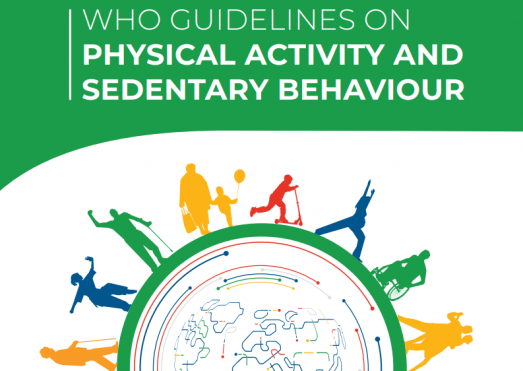Every move counts towards better health: ISCA President speaks at today’s launch of new WHO physical activity guidelines
26/11/2020

Up to 5 million deaths a year could be averted if the global population was more active. At a time when many people are home bound due to COVID-19, new World Health Organization (WHO) Guidelines on physical activity and sedentary behaviour, launched today, emphasise that everyone, of all ages and abilities, can be physically active and that every type of movement counts. ISCA President Mogens Kirkeby is an invited panellist in today’s webinar ‘Launch of WHO 2020 Guidelines on physical activity and sedentary behaviour. Every move counts’, which starts at 4pm CET.
The new WHO guidelines recommend at least 150 to 300 minutes of moderate to vigorous aerobic activity per week for all adults, including people living with chronic conditions or disability, and an average of 60 minutes per day for children and adolescents.
They also point out that all physical activity is beneficial and can be done as part of work, sport and leisure or transport (walking, wheeling and cycling), but also through dance, play and everyday household tasks, like gardening and cleaning, count towards our daily exercise.
“Physical activity of any type, and any duration can improve health and wellbeing, but more is always better,” says Dr Ruediger Krech, Director of Health Promotion, World Health Organization, “and if you must spend a lot of time sitting still, whether at work or school, you should do more physical activity to counter the harmful effects of sedentary behaviour.”
Dr Fiona Bull, who was a keynote speaker at last year’s MOVE Congress, is the Head of the Physical Activity Unit that led the development of the new WHO guidelines. She underlines that the “new guidelines highlight how important being active is for our hearts, bodies and minds, and how the favourable outcomes benefit everyone, of all ages and abilities.”
ISCA President Mogens Kirkeby will speak in the panel of the online launch event today and he emphasises that, when looking at adding more physical activity to our everyday lives, personal motivation and support from different sectors are equally important factors in behaviour change.
“Grassroots sport and recreational physical activity are cheap solutions to improving health, but we have to accept it is also complex to add more physical activity to our day. It is complex at the individual level because we need to change our habits – and we know that changing habits takes multifaceted nudging and motivation in daily life. In the same way it is challenging at societal level because several sectors have to recognise, accept and succeed in interacting to creating an environment that can trigger habit change,” he says.
Physical inactivity costs billions in health care and lost productivity
WHO statistics show that one in four adults, and four out of five adolescents, do not get enough physical activity. Globally this is estimated to cost US$54 billion in direct health care and another US$14 billion to lost productivity.
Regular physical activity is key to preventing and helping to manage heart disease, type-2 diabetes, and cancer, as well as reducing symptoms of depression and anxiety, reducing cognitive decline, improving memory and boosting brain health.
The guidelines encourage women to maintain regular physical activity throughout pregnancy and post-delivery. They also highlight the valuable health benefits of physical activity for people living with disabilities.
Older adults (aged 65 years or older) are advised to add activities which emphasise balance and coordination, as well as muscle strengthening, to help prevent falls and improve health.
“Being physically active is critical for health and well-being – it can help to add years to life and life to years,” says WHO Director-General Dr Tedros Adhanom Ghebreyesus. “Every move counts, especially now as we manage the constraints of the COVID-19 pandemic. We must all move every day – safely and creatively.”
WHO encourages countries to adopt the global guidelines to develop national health policies in support of the WHO Global action plan on physical activity 2018-2030. The plan was agreed by global health leaders at the 71st World Health Assembly in 2018 to reduce physical inactivity by 15% by 2030.
You can register to follow the WHO physical activity guidelines launch here
Read the new WHO Guidelines on Physical Activity and Sedentary Behaviour here
Posted on 26/11/2020 by

